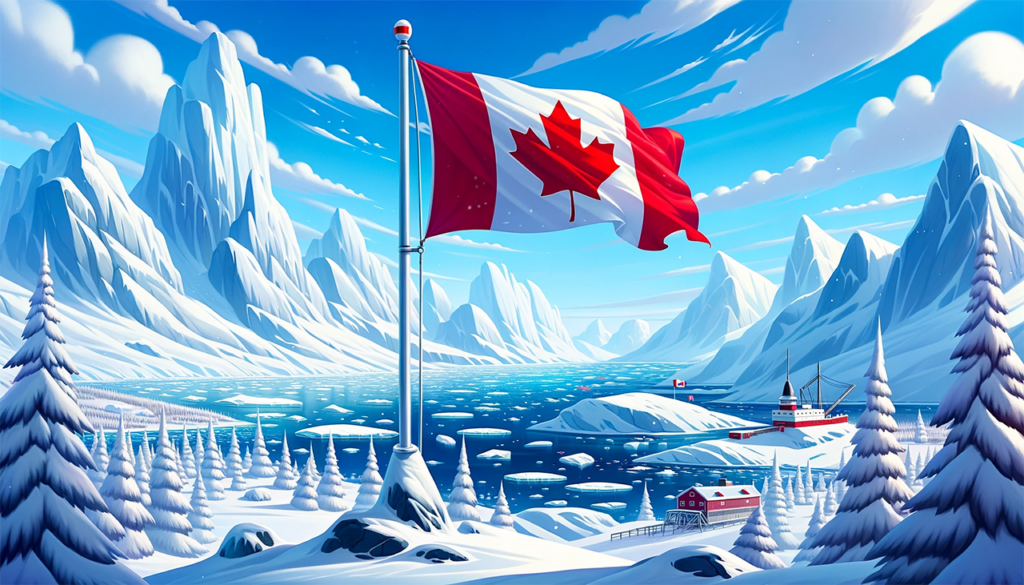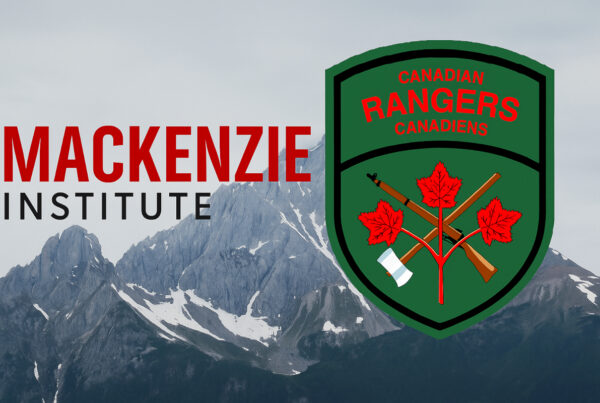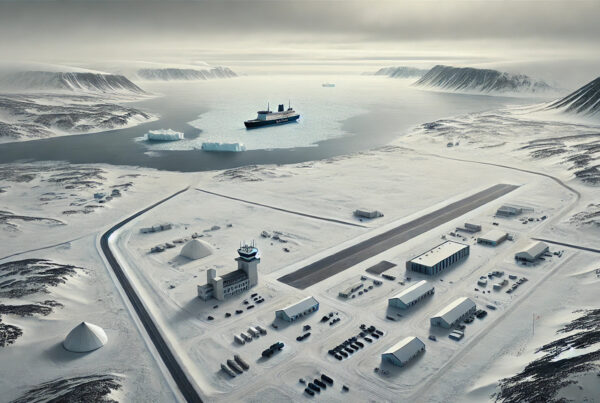 (Written by D.B. Hay.)
(Written by D.B. Hay.)
Looking down from the plane at the vast treeless territory below, it was startling to see the land ‘cut’ by a straight-line gouge in the tundra. The year was 1969. The ‘line’ was the result of the scar left by an exploration crew some 20 years earlier as it traversed the region to an exploration site. The sensitive tundra and muskeg felt and remembered the impact of the weight of the vehicles. But, by the early 1970s with the use of balloon tires developed by Calgary’s John Nodwell of Foremost Engineering such impact on the tundra by supply trains carrying even more weight were an unpleasant memory of the past. Balloon tires allowed great weights to move over long distances at very low pressure per square inch (ppsi).
In the fall of 1969, winter and spring of 1970, the writer spent time in several indigenous and mixed communities in the Northwest Territories as part of a Canada wide not-for-profit research endeavor to determine what might be the appropriate policies for the orderly, responsible and sensitive development of such far and mid-north regions. The intent was to provide a comprehensive policy framework rather watch development occur under a patchwork of ad-hoc federal and provincial resource development driven rules.
The Canadian Arctic and middle North regions are a vast, remote, and strategically significant expanse of territory, covering approximately 40% or more of Canada’s landmass. Its importance extends beyond the borders of the nation, as it is also a key component of North American and global security.
The Arctic’s significance has grown in recent years due to climate change, which has led to increased accessibility and resource exploitation in the region. However, with these opportunities come numerous critical issues related to Canadian Arctic security and sovereignty as well as environmental sensitivity that require careful consideration and strategic planning.
Climate Change and the Arctic
Climate change is one of the most outstanding challenges facing the Canadian Arctic. Naval explorers have tried to navigate through Canada’s usually ice-bound Northwest Passage since the late 1880’s. In 1969, the 1000 foot long, 100,005-ton American built and owned SS Manhattan succeeded as the ice was particularly forgiving that year. The region today is warming at more than twice the global average rate, leading to dramatic changes in the Arctic environment. The melting of sea ice coupled with the more ice-free passage in the Russian arctic has opened new shipping routes, making the Arctic more accessible for commercial vessels and resource extraction. While this presents economic opportunities, it also poses significant security challenges. For example, the aggressive Communist regime of the People’s Republic of China is reported to be building as many as 8 ice-breakers even though it has no ice bound ports.
Security Implications of Melting Ice
The melting of Arctic ice has made the region more navigable for various stakeholders, including Russia, China, and European nations. Increased shipping traffic through the Arctic could potentially lead as well to a surge in illegal activities, such as smuggling and environmental violations. Within the past 5 years, a commercial mining company with direct ties to the PRC Government tried to acquire a mine site with a deep-water port in the Canadian high arctic. The concern for Canada was the potential ‘other’ purposes for which the location and the deep-water port could be used; a radar jamming station or a submarine base on Canadian territory? Furthermore, the absence of clear international regulations for the Arctic’s emerging shipping routes poses security risks, including the potential for accidents, oil spills, and territorial disputes. As well, the sustained passage and presence of ‘southern’ non-native people from various cultures could have an unwelcome impact on local culture and traditions when such cultures are still coping with the effects of the import of ‘southern Canadian’ perspectives.
Resource Opportunities and Competition
The Arctic region is rich in natural resources, including oil, natural gas, minerals, and fish stocks. As these resources become more accessible due to melting ice, competition among Arctic nations for their exploitation is intensifying. This competition can lead to disputes over sovereignty and resource ownership, raising concerns about potential conflicts in the future.
This is not a new phenomenon. An older colleague of the writer recounts an incident during the building of the Distant Early Warning (DEW) line in the early 1950’s. One day while working in the installation of one of the radar screens, my colleague noted a large Russian aircraft land on the adjacent runway. The large red star on the fuselage was obvious. The crew claimed a mechanical malfunction and were invited to dinner and spend the night while the plane’s mechanic repaired the problem. They did. During conversation, the Russian crew revealed that they were running aeromagnetic surveys (a technology developed during WW2) of the Canadian Arctic. As the plane gained altitude, my friend watched the long mag line unspool behind the plane.
Sovereignty Challenges in the Canadian Arctic
Canada’s sovereignty over its Arctic territories has long been a core element of its national identity. However, this sovereignty faces various challenges, both from within and outside the country.
Indigenous Rights and Self-Determination
Indigenous peoples have inhabited the Arctic region for thousands of years, and many live in remote communities that rely on traditional practices and economies. Canada has committed to upholding the rights of Indigenous peoples and their self-determination, based on well negotiated economic and cultural agreements. Balancing these commitments with resource development and security interests in the Arctic can be challenging for all parties involved. It requires meaningful consultation, collaboration and cooperation with Indigenous communities to ensure their interests, needs and perspectives are considered, respected and incorporated.
International Rivalry
Canada’s sovereignty in the Arctic is also challenged by other nations, particularly Russia and the United States. Russia, in particular, has been assertive in its claims to Arctic territories and has established military bases in the region. Russia too, by word and deed has challenged not only Canada’s, but those other Nordic countries as well. This has raised concerns about the potential militarization of the Arctic and its implications for Canadian sovereignty.
In May of 2019, then US Secretary of State called Canada’s claim to the Northwest Passage ‘illegitimate’. That his comment was disputed is not the issue; that he made it, is. Then there is the PRC, whose willful rejection of the territorial claims of other countries in Yellow Sea lays the groundwork to its approach to the oil and gas rich Beaufort Sea and resource rich Arctic Ocean.
Need for Infrastructure
Canada’s ability to maintain its sovereignty in the Arctic depends on the presence of infrastructure and capabilities in the region. This includes investments in naval and coast guard capabilities, search and rescue capabilities, and infrastructure for monitoring and surveillance. Insufficient infrastructure can undermine Canada’s ability to assert its sovereignty effectively. The Canadian government has talked about the use of drones to monitor security. But there are no significant military facilities in the Canadian Arctic.
Security Implications for Canada
Canadian Arctic security is intimately tied to the broader national security context. Recent Government actions to reduce the Canadian defence budget by over one billion dollars does nothing to assure a reasonable approach to overall Canadian defence and security needs, let alone Arctic security specifically. Several key security implications emerge from the evolving situation in the Arctic.
Defense and Security Posture
Canada must maintain a credible defense and security posture in the Arctic to deter potential threats and safeguard its sovereignty. This includes investments in naval capabilities, air surveillance, and search and rescue assets. Fixed military bases in specific locations are truly appropriate to demonstrate national control. Remote autonomous facilities on their own are not. Cooperation with NATO allies, such as the United States and Norway, is essential to ensure the region’s security.
Professional militaries often use scenarios (war games) to test and improve their capabilities and readiness. Occasionally, such games are developed or planed by outside private enterprise consultants to test their own concepts. The writer is aware of one such scenario which saw three northern Canadian communities invaded by air, initially by paratroops. Then once the airfield was secured, by troops in air transports. About 200 -300 enemy personnel were involved at each location. In addition to the airfield, the town’s water and electricity stations were seized together with the administration. Communication with the outside world was cut off electronically as well. When Canadian governments (Federal and Territorial) realized something was wrong, the plane sent to investigate was shot down. Then the Federal Government decided to send fighter aircraft to determine what was going on, to be followed by a military company with some RCMP officers on a transport plane. Of course, it was over a three-hour flight for the fighters to get there and when they did, one or more was also shot down by MANPAD’s as they were not allowed to engage any ground forces due to the risk of harm to the civilian population. Thus, the invaders were left to build their base for expansion into the rest of Canada, until the United States acted on its own…..
Another scenario saw Whitehorse occupied by an armoured column of 3,000 invaders in less than four hours after landing in Skagway, Alaska under an electronic cloak designed to blank out communications. Canada had no troops nor significant other military capability closer than southern British Columbia.
Search and Rescue
The Arctic’s harsh environment and remote location make it a challenging area for search and rescue operations. As the region becomes more accessible, the risk of accidents and emergencies increases. Canada must have the capacity to respond effectively to such incidents, which may involve coordination with other nations. A regional arctic medical facility with mobile capability, particularly for search and rescue in critical areas of the Northwest Passage, would be a boon to residents who are now forced to go ‘outside’ for major medical treatment.
Environmental Security
The Arctic’s delicate ecosystem is highly vulnerable to environmental threats, such as oil spills and pollution from shipping and resource extraction activities. Environmental security in the Arctic is closely linked to national security, as the degradation of the environment can have far-reaching consequences, including damage to the livelihoods of Indigenous communities. Natural regeneration time is much longer in the Arctic. Remediation is much more difficult. The easiest way to fix a problem, is not to cause it.
Conclusion
The Canadian Arctic is a region of immense strategic importance to Canada and the broader international community. As climate change accelerates, the Arctic’s accessibility and resource potential are growing, but so are the security and sovereignty challenges. Canada must navigate these challenges by adopting a comprehensive and coordinated approach that balances economic interests, Indigenous rights, recognized exercise of military/security presence/capability, environmental preservation, and national security imperatives. By doing so, Canada can assert its sovereignty in the Arctic while fostering cooperation and dialogue with other Arctic nations to ensure the region remains a zone of peace, vitality and stability.








